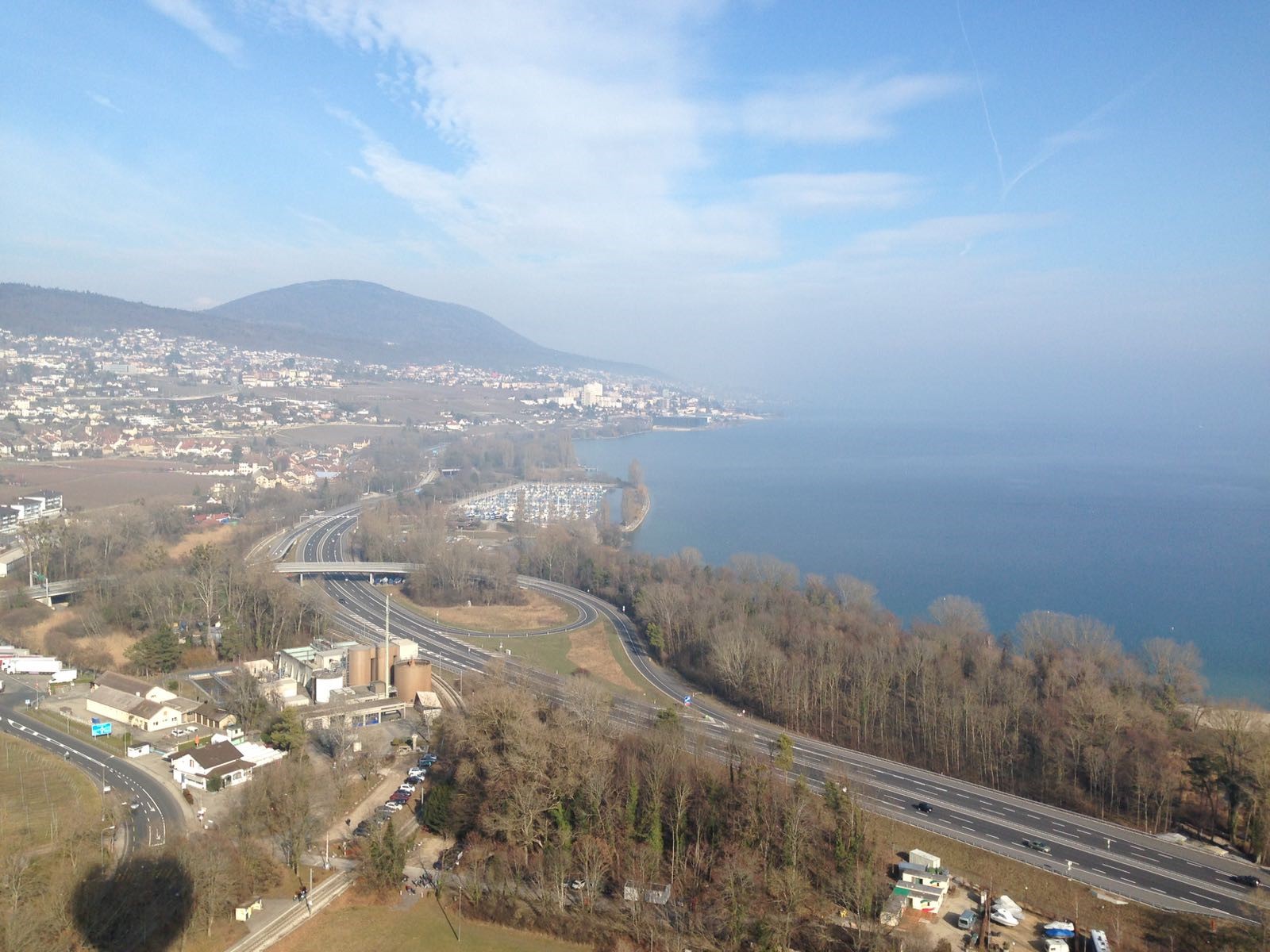SURPRISE is on the road again this week, heading off to Neuchâtel in Switzerland, home to our partner CSEM (Swiss Centre for Electronics and Microtechnology).
So where are we exactly?
We are in the Western part of Switzerland, in the capital city of the canton of Neuchâtel. Neuchâtel is located 50 km from the Swiss capital Bern and less than 30 km from the French border.
As you can see from the Copernicus Sentinel-2 satellite image below, the city lies on the North-Western shore of the Neuchâtel lake, at the junction between the Three-Lakes-Region and the Jura mountains. This outstanding position makes Neuchâtel as a particularly green area, with forests covering over 50% of the whole city territory.
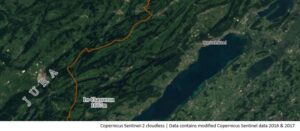
Why should I go to Neuchâtel?
The very name of Neuchâtel, meaning “New Castle”, already gives a precious tip, as the Old Castle is one of the symbols of the area. It overlooks the city and, together with the gothic church ”la Collégiale”, it gives to Neuchâtel a particular charm.
Neuchâtel boasts centuries of history, with the oldest traces of humans in the territory back to 13.000 BC. However, the very birth of Neuchâtel is in the year 1011, when Rudolph III of Burgundy decided to present his wife Irmengarde with a new castle on the shores of the lake. The Laténium, the largest archaeological museum in Switzerland, and the Neuchâtel Museum of Art and History, hosted at the Palais de Beaux Arts, are definitely the places to be if you want to learn more about the city’s history.
Situated approximately 10km East of Neuchatel, the locality “La Tène” has given its name to the “La Tène Culture” that flourished during the late Iron Age. The lake shores are as well the home of numerous Neolithic and Bronze Ages “Palafitte” sites documented in the museum.
What else? Well, if you’re fond of watches, then you will be amazed by this city. Neuchâtel is renowned worldwide for their watchmaking tradition, which started in the XVIII century and is still strong nowadays. The city is home to major international companies active in the watchmaking industry, such as the Swatch group, Ebauches SA holding, Bulgari, Rodolphe and Hautlence (the latter’s name being an anagram of Neuchâtel). It also hosts the prestigious international watchmaking school WOSTEP. The OMEGA Museum offers a wealth of interactive experiences to plunge you into the attracting world of watchmaking. Check out this video to get a taste of what you could experience there!
Not so fond of history, archaeology and watchmaking? Don’t worry, Neuchâtel has something for you too!
What about having a stroll through the Old Town or through the lively Place des Halles market, to buy the famous Swiss cheese and chocolate?
If you enjoy outdoor activities, the lake and mountains nearby offer a wealth of attractions: from boat cruises, to trekking and a range of high-adrenaline sports. Take a look at spectacular freeriding across Neuchâtel forests!
So what about science and technology?
Again, Neuchâtel links with science and technology are deeply rooted in the past. The strong watchmaking tradition has led to extensive R&D in this sector and in micro-technics in general.
Neuchâtel hosts the Microcity Neuchâtel, part of the Switzerland Innovation Park Network West (EPFL), the biggest microtechnology competence centre in Europe, with over 600 researchers, 12 laboratories and infrastructure at the forefront of technology.
It is also home to the French-speaking University of Neuchâtel, boasting five faculties and more than a dozen institutes, including arts and human sciences, natural sciences, law, economics and theology.
Funny fact: the Jaquet-Droz automata, designed and built by the Neuchâtel watchmaker family Jaquet-Droz between 1768 and 1774 as a marketing initiative to improve the sales of watches among European nobles, are considered to be among the remote ancestors of modern computers.
Last but not least, Neuchâtel is home to the SURPRISE project partner CSEM, a private, non-profit Swiss organisation for applied research. CSEM has as a mission to support Swiss and European industry with research and innovation and it is a recognised RTO. It develops innovative technology platforms through five strategic programmes: microsystems, systems, photovoltaics, ultra-low-power integrated systems, and surface technologies. The CSEM Systems division is involved in SURPRISE and has extensive experience in the design and development of complex solutions combining electronics, optics and photonics, mechanics as well as smart control and signal processing algorithms and software. Such high-level skills make them perfectly placed to work on the development of a SURPRISE COTS prototype for the SLM and on a SLM solution that can be space qualified over the long term.
Some sectors of CSEM Systems division are present on the Neuchâtel observatory site. The Observatory provided observations over years to calibrate clocks since 1858. In relation with observation for time keeping, the Observatory has been pioneering atomic clocks. Some of the developments resulted in products that are now serving as time reference on Galileo constellation.
Historically, CSEM is the assembly of several older watchmaking research centres. One of them was the “Centre Horloger of Neuchâtel”.
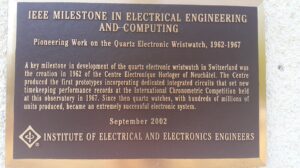
Commemorative plate at the entrance of Neuchâtel Observatory
And what about its residents? What do they say about Neuchâtel?
Neuchâtel lies between a lake and small mountains, with the top at 1.600 m (Chasseral), and residents have many ways to enjoy this situation.
This is a livable small town, it is likely to take less than 30 minutes for the journey home to work and traffic jams are almost unknown.
There’s plenty of things to do in your free time. Skiing, skating on frozen lakes and ponds, hiking and VTT, only to mention some.
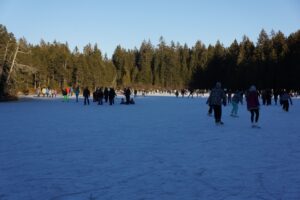
Ice skating in wintertime
And when you’re tired of so many outdoor activities, youan stop in one of the numerous farm-restaurants dispatched along the paths, to enjoy genuine local food.
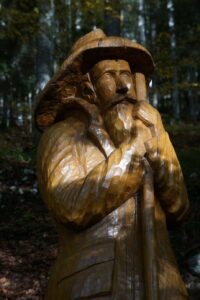
Wooden statues along the hiking trails
Local traditions are also strong in the area. One of these is Torrée, consisting making a large fire in the forest and pasturage and cook below the hot ashes Neuchâtel sausages and potatoes.
Pictures in this article: Alexandre Pollini – SURPRISE project partner CSEM; Satellite image: Copernicus Open Access Hub

